Solar eclipses from a distance of 36 thousand km or why we know more about their space than about our
I chose the title for this text from two options, but then decided to combine. Many are already used to what I'm writing about Curiosity or, in extreme cases, some NASA achievement. Today I will move away from tradition, and talk about sore native - about the Russian exploration space. No, I'm not talking about theft and nothing flies. On the contrary, something flies, there is even something to be proud of, although not as much as we would like. I’m talking about the damn stupid and often disastrous work of our space science public relations departments.
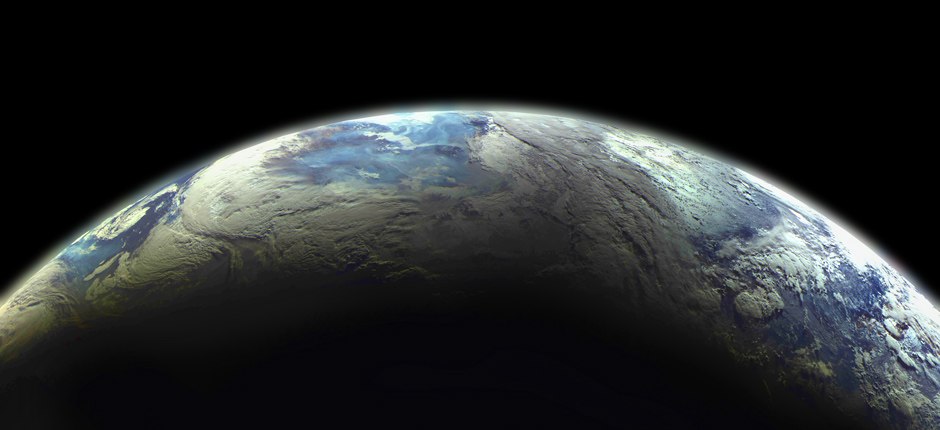
( Whoever is not interested in the problems of the Russian cosmonautics, but wants to see solar eclipses, can skip the text and immediately move to the end of the post ).
A chain of several events and random thoughts prompted me to the text of the post. First, a news announcement with the headline “Interesting Results of the Early Scientific Program of RadioAstron Observatory” caught my eye. Hmm, probably worth a read. If anyone else does not know, RadioAstron, aka Spectr-R, is a Russian space radio telescope. It flies in an elongated elliptical orbit and is at a distant point in flight almost at a distance from the moon. Together with the ground-based radio observatory, it can work as one giant plate from the Earth to the Moon.
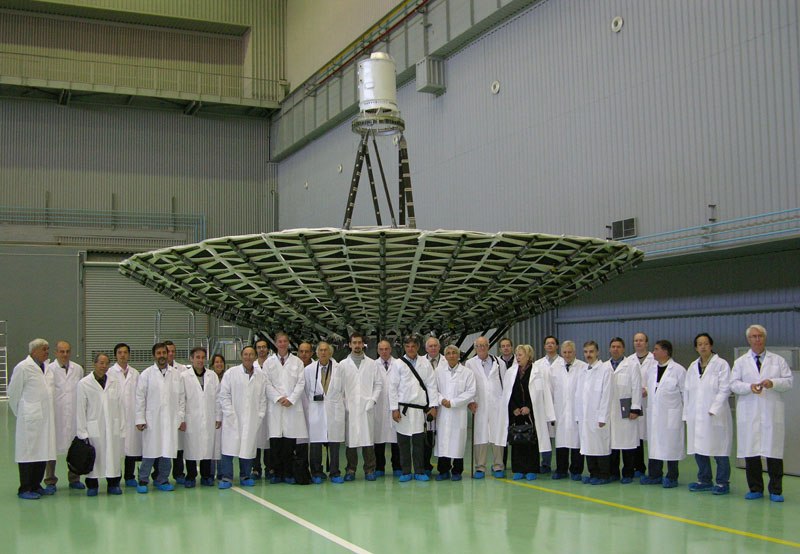
News on the website of the NGO named after Lavochkina read:
The ground-space interferometer "Radio Astron" continues to explore uncharted territory - to study the nuclei of active galaxies with ultra-high angular resolution. The interferometer successfully detected the nuclei of the BL Lizard galaxies, as well as objects in the constellations of Giraffe, Cancer, Hydra, and others on bases from 6 to 11 Earth diameters in the ranges of 6 and 18 cm. For many of these objects, brightness temperature estimates give values of about 10 trillion Kelvin (10 to 13 degrees), which exceeded the parameters expected by astronomers, this is extremely important for studying the physics of radiation in the nuclei of galaxies. Such discoveries may in the future force scientists to reconsider their ideas about the physics of the Universe.
... Does everyone understand? Interesting? I - from the fourth time I just began to understand what was at stake. No less exciting illustrations are attached to the news:
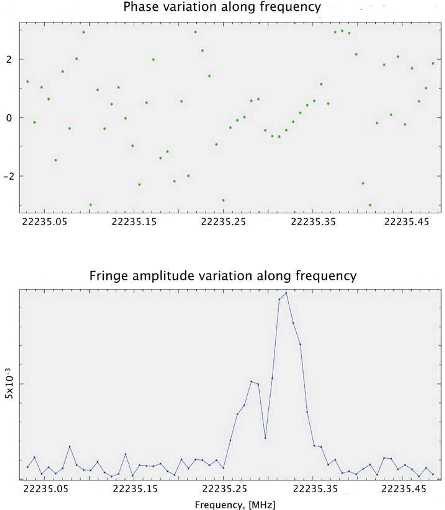

The color picture is not related to the news at all and was already published in October. Apparently, without it, the material looked very dreary. The whole news .
Is that what? Is this a report on the work of a phenomenal apparatus that really has no analogues in the world? Who did they write it for? Do they even know that in the country astronomy in schools is only optional? And they talk about the nuclei of galaxies at bases in 11 diameters of the Earth. Okay, at least something else is being said. At the same time, on the same site of the NGO named after Lavochkin on the page " Current state " the latest news about "Radioastron" - dated March 11, 2011: "Already collected now we are experiencing." Although he has been flying for a year and a half.
Okay. In the same feed, there was other news:Electro-L 2 years of successful work in orbit .
This is really clear and good news. For two years now, in a geostationary orbit over the Eastern Hemisphere, a Russian meteorological satellite has been hanging, which, right by NASA's best "Hollywood" traditions, along with science, takes incredible photographs of the Earth.
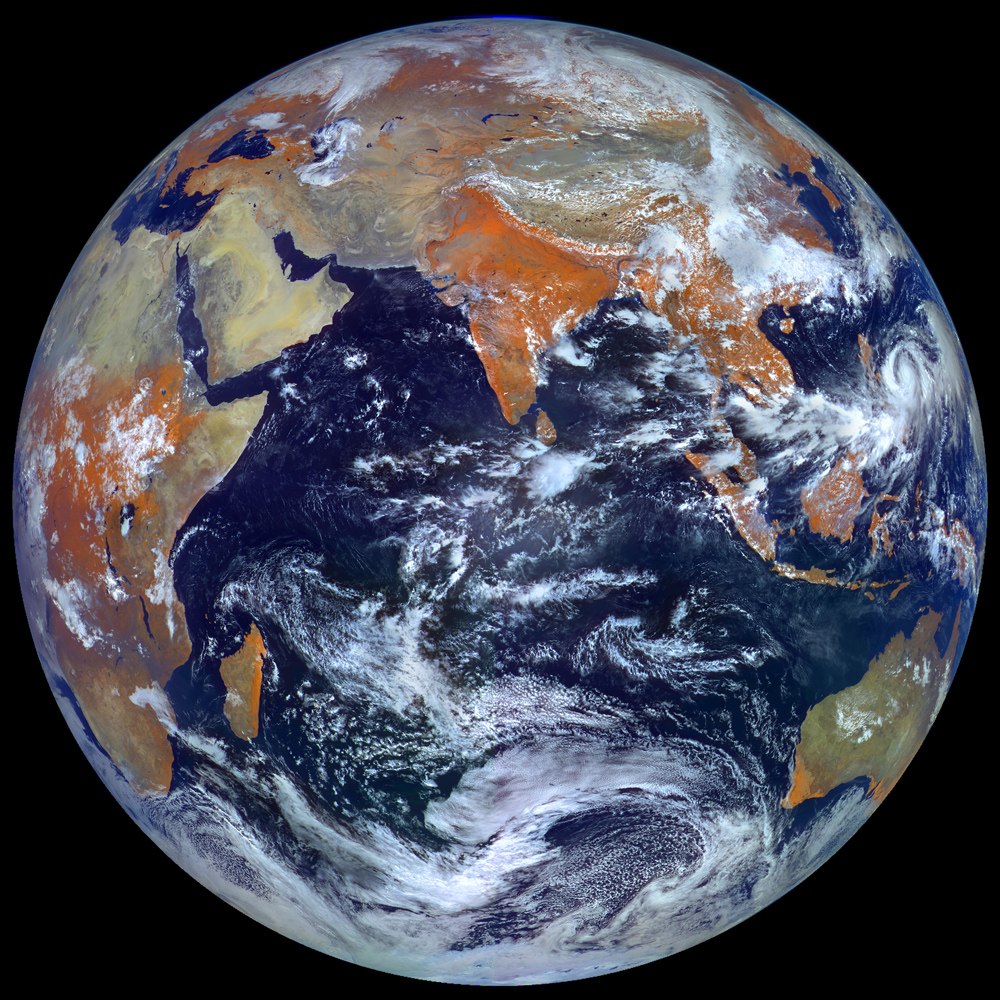
( In the original, the colors are less spectacular, but Photoshop works wonders. And the color does not match the visible, because the near infrared range is captured, and all the greens look orange, and the deserts, on the contrary, are greenish ). Full size 120 megapixels on the GigaPan . Detail: 1 km per pixel.
The funniest and saddest thing is that foreigners were the first to write about these photos. That is, first the British and the Americansofigeli from photographs of our companion, our journalists were awesome from the fact that foreigners were dead, and rushed to talk about "one single 120 megapixel photograph." Then the enthusiasm subsided, and the satellite continued to hang in orbit, carefully taking the "one single" 120 megapixel photo ... every half hour. What is most surprising, in the context of Russian space traditions, is online access to almost the entire archive of photographs. The official website of the Scientific Center for Earth Operative Monitoring (NTs OMZ) daily laid GIFCA animation daily shootings. And access to the FTP server is openfor 2012-2013 (Just don’t start downloading everything at once, otherwise we’ll put it as a habro-effect). Photos there are distributed in folders by year, month, day and hour. There are two archives inside: one with raw data, the second with large jeeps. Outside the archives, there are previews of 800x800 in RGB and different spectral ranges.
The quality of the shooting is simply amazing:

At the same time, our media has not recalled the apparatus, which has been working properly for two years, since its publication in the Western press. And it’s true that writing about him is boring somehow: it works and works, let's discuss the “Phobos-Grunt” utop for the 100,500th time better. But scientists, for their part, did not provide journalists with any informational reasons, I think they don’t even know this term.
Looking at how news is being prepared in our institutes for RadioAstron or even for Curiosity (in PDF !), We can conclude that our space science has very distant ideas about what public relations are and what modern media society lives by, and how to attract attention to yourself. I am afraid that they have the biggest problem with understanding why they should even draw attention to themselves.
The problem is not only in their too meager or too boring reports of what has been done, but also too loud and boldpromises of what they will do. In general, I would have forbidden for five years to all officials of the Russian space program to use the momentum in the future tense in my speech. They have had this problem since GLONASS. Since 2001, we were promised that just about a year later. As a result, after 10 years, when he reached 100% power, they remembered him only thanks to Steve Jobs.
True, in recent times, Roscosmos has begun some kind of work, it has started a Youtube channel , it writes on Twitter , it even has VKontakte . But Russian space science with PR has a complete failure.
Let's get back to Electro-L. After reading the news of his biennium, I suddenly realized that our pundits valiantly missed at least three occasions to remind ourselves and their work of Russian and world society. Solar eclipses are a free global show for the media, and our satellite has a unique opportunity to shoot the passage of the moon shadow across the Earth from a distance of 36 thousand km.

In 2012, there were two solar eclipses that put the ears of the foreign press: in May in Japan and in November in Australia. And both of them are in the field of view of Electro-L. True, the Australian could not be removed due to some technical failure - all the shots in half a day are black. But it was possible to find another - partial, which almost no one saw, because it was at the South Pole: November 25, 2011. And we can see. True, not from the pole, but from space. Look, in the afternoon the shadow runs across Antarctica.

( Unfortunately, for 2011 there are no source images available, so you can only see the preview from the animation ).
But the “Japanese” rare ring eclipse in all its glory turned out:

Size larger
Well, and finally, the most important thingfor which it was generally worth sending a satellite : a desktop with an eclipse.
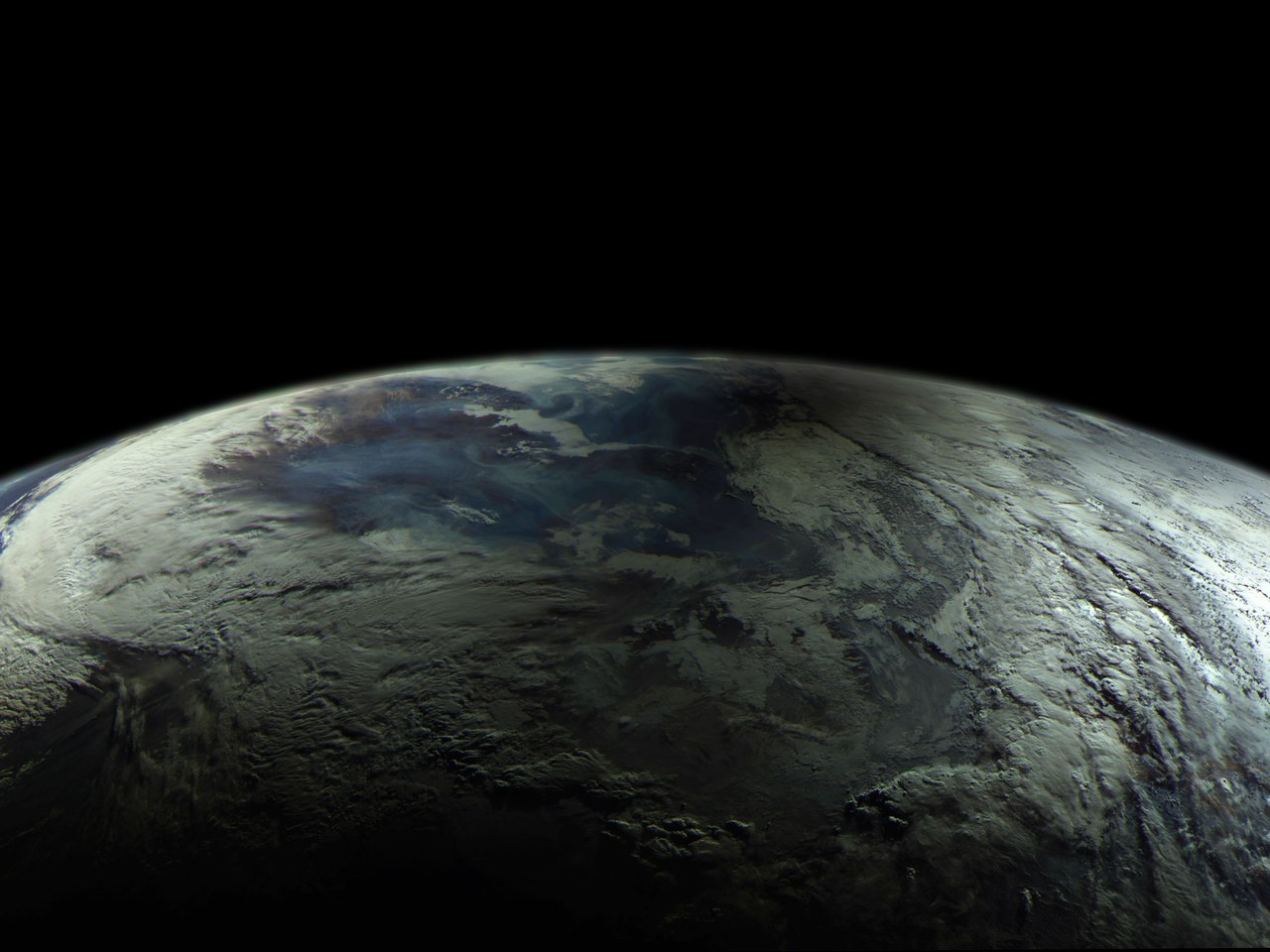
3200x1920 2560x1920 , 1920x1200 , 1920x1080
The satellite always hangs above one point on the Earth, so the camera angle does not change. But the subject is changing. Typhoons, cyclones, dust and snow storms, volcanic eruptions, forest fires - everything falls into his pictures, you just need to find it. Now Electro-L has its own Vkontakte page , and I will try to write here how interesting materials will accumulate.

( Whoever is not interested in the problems of the Russian cosmonautics, but wants to see solar eclipses, can skip the text and immediately move to the end of the post ).
A chain of several events and random thoughts prompted me to the text of the post. First, a news announcement with the headline “Interesting Results of the Early Scientific Program of RadioAstron Observatory” caught my eye. Hmm, probably worth a read. If anyone else does not know, RadioAstron, aka Spectr-R, is a Russian space radio telescope. It flies in an elongated elliptical orbit and is at a distant point in flight almost at a distance from the moon. Together with the ground-based radio observatory, it can work as one giant plate from the Earth to the Moon.

News on the website of the NGO named after Lavochkina read:
The ground-space interferometer "Radio Astron" continues to explore uncharted territory - to study the nuclei of active galaxies with ultra-high angular resolution. The interferometer successfully detected the nuclei of the BL Lizard galaxies, as well as objects in the constellations of Giraffe, Cancer, Hydra, and others on bases from 6 to 11 Earth diameters in the ranges of 6 and 18 cm. For many of these objects, brightness temperature estimates give values of about 10 trillion Kelvin (10 to 13 degrees), which exceeded the parameters expected by astronomers, this is extremely important for studying the physics of radiation in the nuclei of galaxies. Such discoveries may in the future force scientists to reconsider their ideas about the physics of the Universe.
... Does everyone understand? Interesting? I - from the fourth time I just began to understand what was at stake. No less exciting illustrations are attached to the news:


The color picture is not related to the news at all and was already published in October. Apparently, without it, the material looked very dreary. The whole news .
Is that what? Is this a report on the work of a phenomenal apparatus that really has no analogues in the world? Who did they write it for? Do they even know that in the country astronomy in schools is only optional? And they talk about the nuclei of galaxies at bases in 11 diameters of the Earth. Okay, at least something else is being said. At the same time, on the same site of the NGO named after Lavochkin on the page " Current state " the latest news about "Radioastron" - dated March 11, 2011: "Already collected now we are experiencing." Although he has been flying for a year and a half.
Okay. In the same feed, there was other news:Electro-L 2 years of successful work in orbit .
This is really clear and good news. For two years now, in a geostationary orbit over the Eastern Hemisphere, a Russian meteorological satellite has been hanging, which, right by NASA's best "Hollywood" traditions, along with science, takes incredible photographs of the Earth.

( In the original, the colors are less spectacular, but Photoshop works wonders. And the color does not match the visible, because the near infrared range is captured, and all the greens look orange, and the deserts, on the contrary, are greenish ). Full size 120 megapixels on the GigaPan . Detail: 1 km per pixel.
The funniest and saddest thing is that foreigners were the first to write about these photos. That is, first the British and the Americansofigeli from photographs of our companion, our journalists were awesome from the fact that foreigners were dead, and rushed to talk about "one single 120 megapixel photograph." Then the enthusiasm subsided, and the satellite continued to hang in orbit, carefully taking the "one single" 120 megapixel photo ... every half hour. What is most surprising, in the context of Russian space traditions, is online access to almost the entire archive of photographs. The official website of the Scientific Center for Earth Operative Monitoring (NTs OMZ) daily laid GIFCA animation daily shootings. And access to the FTP server is openfor 2012-2013 (Just don’t start downloading everything at once, otherwise we’ll put it as a habro-effect). Photos there are distributed in folders by year, month, day and hour. There are two archives inside: one with raw data, the second with large jeeps. Outside the archives, there are previews of 800x800 in RGB and different spectral ranges.
The quality of the shooting is simply amazing:

At the same time, our media has not recalled the apparatus, which has been working properly for two years, since its publication in the Western press. And it’s true that writing about him is boring somehow: it works and works, let's discuss the “Phobos-Grunt” utop for the 100,500th time better. But scientists, for their part, did not provide journalists with any informational reasons, I think they don’t even know this term.
Looking at how news is being prepared in our institutes for RadioAstron or even for Curiosity (in PDF !), We can conclude that our space science has very distant ideas about what public relations are and what modern media society lives by, and how to attract attention to yourself. I am afraid that they have the biggest problem with understanding why they should even draw attention to themselves.
The problem is not only in their too meager or too boring reports of what has been done, but also too loud and boldpromises of what they will do. In general, I would have forbidden for five years to all officials of the Russian space program to use the momentum in the future tense in my speech. They have had this problem since GLONASS. Since 2001, we were promised that just about a year later. As a result, after 10 years, when he reached 100% power, they remembered him only thanks to Steve Jobs.
True, in recent times, Roscosmos has begun some kind of work, it has started a Youtube channel , it writes on Twitter , it even has VKontakte . But Russian space science with PR has a complete failure.
Let's get back to Electro-L. After reading the news of his biennium, I suddenly realized that our pundits valiantly missed at least three occasions to remind ourselves and their work of Russian and world society. Solar eclipses are a free global show for the media, and our satellite has a unique opportunity to shoot the passage of the moon shadow across the Earth from a distance of 36 thousand km.

In 2012, there were two solar eclipses that put the ears of the foreign press: in May in Japan and in November in Australia. And both of them are in the field of view of Electro-L. True, the Australian could not be removed due to some technical failure - all the shots in half a day are black. But it was possible to find another - partial, which almost no one saw, because it was at the South Pole: November 25, 2011. And we can see. True, not from the pole, but from space. Look, in the afternoon the shadow runs across Antarctica.

( Unfortunately, for 2011 there are no source images available, so you can only see the preview from the animation ).
But the “Japanese” rare ring eclipse in all its glory turned out:

Size larger
Well, and finally, the most important thing

3200x1920 2560x1920 , 1920x1200 , 1920x1080
The satellite always hangs above one point on the Earth, so the camera angle does not change. But the subject is changing. Typhoons, cyclones, dust and snow storms, volcanic eruptions, forest fires - everything falls into his pictures, you just need to find it. Now Electro-L has its own Vkontakte page , and I will try to write here how interesting materials will accumulate.
